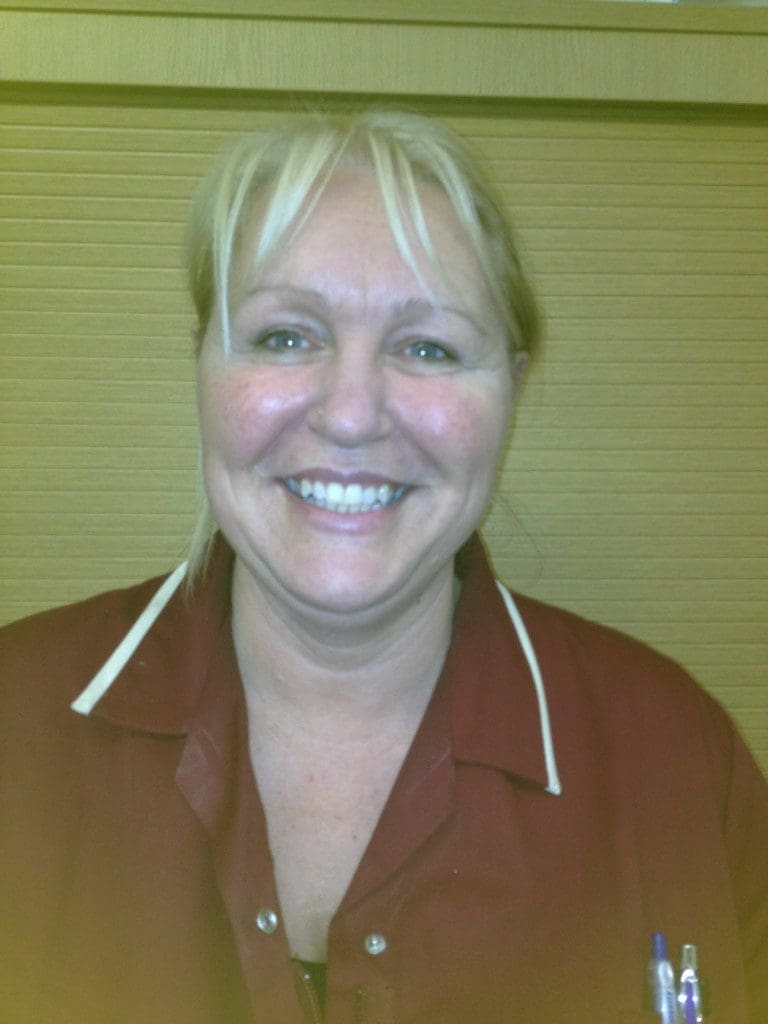Sue Coleman, our Care Partnership Manager, was delighted to be personally invited to train and shadow alongside the palliative care team at Southend Hospital. The team consists of seven macmillan nurses and three consultants. She met with a CNS macmillan nurse and a palliative care consultant. Here’s Sue’s story…

In the morning, I went along with a macmillan nurse to a multidisciplinary meeting where they discussed the treatment of patients, it was at this point I realised they would talk about the family and every scenario. We went through several cases, some of which were very sad. Attending this meeting were consultants, nurses, a reverend and the counselling team, all taking time to decide the best way forward for the patients.
After the meeting, we met with a team of junior doctors. The macmillan nurse discussed what her job entailed. She felt it very important to express to the junior doctors how they must explore all avenues before referring patients to the palliative team if they are not in control of their pain. She described a situation where a patient referred for their pain hadn’t even had a paracetamol prescribed to them. She explained how she had to send then back to the junior doctor for further pain relief ie paracetamol, and that this was upsetting for the person and unnecessarily.
End of life care
We then went onto the wards to visit patients that were at the end of their lives. It was at this point I thought I’d need to hold it together and be professional, for me this was a big ask, I dug deep, took a deep breath, and followed the macmillan nurse onto the ward. When we walked onto the ward I felt everyone looked up and realised that the macmillan nurse meant business. The junior doctor came over to discuss the meds she had prescribed for the gentleman we were going to see. She advised the junior doctor to change this medicine as it would cause sickness, she proceeded to show me how she would prescribe a different medication as she was aware this drug caused a great deal of discomfort and distress to an already very unwell gentleman.
We then met with the gentleman, she explained to me how he didn’t want to be here anymore. He had stopped taking anything by mouth and she had persuaded him to have a syringe driver instead as she knew he was going to be in a great amount of pain and it was important to find a way of controlling this. She explained this is a way of treating someone without them being aware they are receiving treatment as it was less invasive and she didn’t want to upset this gentleman’s wish that he was ‘nil by mouth’.
The role of a macmillan nurse
The majority of a macmillans nurse’s time is spent making sure the individual is comfortable; she explained her role is all about comfort. She told me when she visits a ward, the first thing she asks for is the bowel chart for the person she is going to see as it is important to see when their bowels last opened and what was the stool like as it tells you a lot about what is happening inside. If someone hasn’t opened their bowels for two weeks this could mean they have an obstruction in their bowel. If the stool is dark , this could mean they have internal bleeding.
She also asks to see their tongue, this tells you a lot about how the individual is doing. If they have a sore tongue, they may not be able to eat or drink. Sure enough when we looked at the gentleman’s tongue, he had thrush as his body is shutting down and his body is unable to fight this. We prescribed some medication and the gentleman felt imminently better and he’s now feeling like eating.
We then visited a few more patients, one person was having his dinner who was being fed by a volunteer feeder. She explained she would not interrupt this as it was in the patient’s best interests he continued to eat.
Cumulative Grief
As I have been learning about cumulative grief, I asked the macmillan nurse whether she has experienced this? She said she finds it hard sometimes to switch off. However, she is lucky enough to work alongside counsellors.
Cumulative grief is a situation where unresolved grief from a number of bereavement experiences accumulates and affects the person in a way that leads to a deep sense of bereavement. This can occur when a person suffers several losses close together, making it impossible for the individual to recover.
One of the aims of end of life care is to prevent, relieve and minimize any distress a person may be experiencing. The manifestations of distress and its causes will vary from person to person. Discomfort can occur for a variety of reasons, for example pain, nausea, constipation, sore mouth, difficulty swallowing and incontinence. The goal of maintaining comfort is to ensure that the dying person is as comfortable as possible, while respecting their wishes.
I was then shown all the paperwork side of things, a TEP form treatment escalation plan which can be changed regularly. This is kept in the front of the patient’s folder. There are also three pain clinics: chronic pain, acute pain and palliative pain and symptom management.
Being a macmillan nurse, means she can help someone have their last wish. This could be they want their pet dog to come into hospital. They may even want to get married on the ward before they die.
An afternoon with the palliative care clinic
In the afternoon I was invited to attend a palliative clinic. I met a palliative care consultant who explained to me the need to be strong as we were meeting a 24 year old young lady who’s breast had spread.
The young lady was understandably very upset, and the consultant was so professional throughout this very difficult appointment. We talked through the last scan and the consultant had to inform the lady she had ‘bone Mets’, this is because the cancer she has, had spread into her spine, caused by bone metastases. She talked things through with her, she was honest, kind and time wasn’t a problem. She had the time to listen to what the young lady wanted. The consultation took over half an hour. It was nice to see palliative patients are not rushed, nothing is too much trouble, time was not an issue.
It was then I realised you have to be a certain sort of person to do this job. It was such an honour to meet the patients and shadow the palliative care team for the day. Sue Coleman
